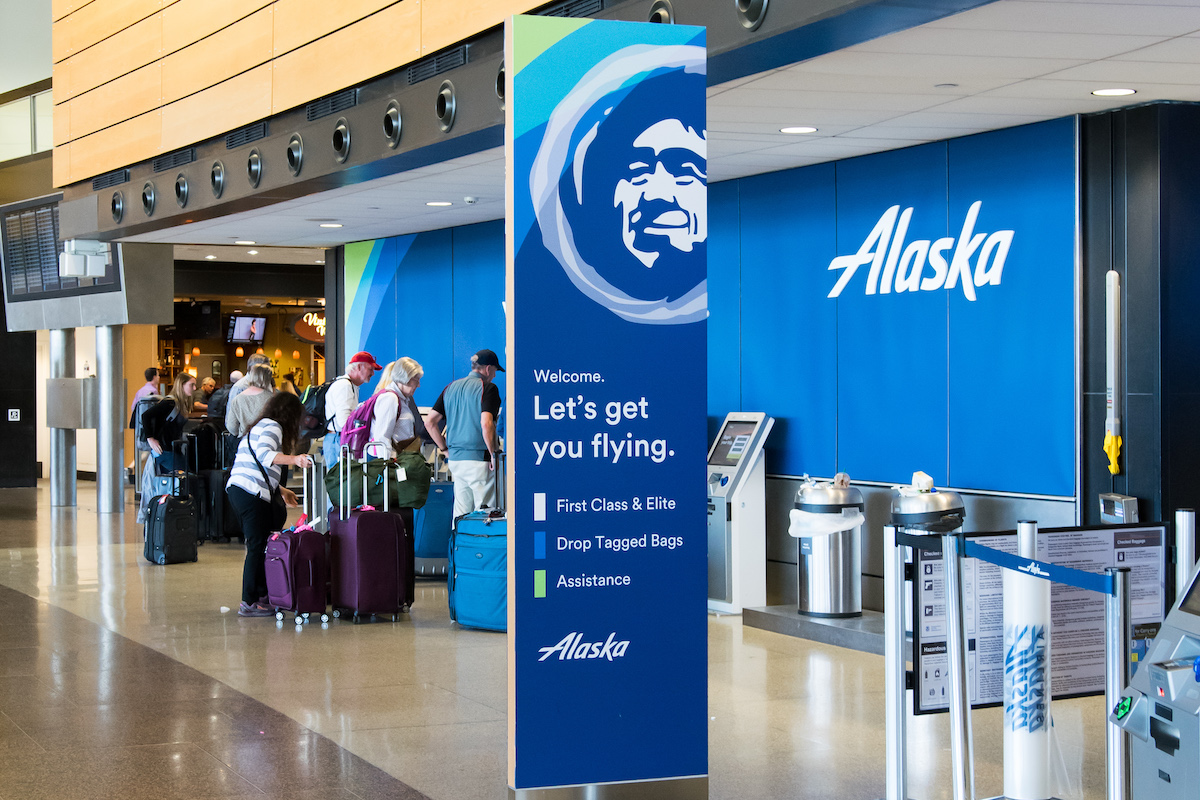The surge in U.S. domestic flying, be it revenge travel or new blended business and leisure trips, appears over. Alaska Airlines executives said that the second quarter — June to be exact — may be the zenith of the domestic recovery even as overall travel demand remains robust.
Unit revenue at the Seattle-based airline, measured in RASM and a rough measure of average airfares, fell 3% year-over-year in the second quarter. That compares to a 15% increase in the first quarter, and an eye-popping nearly 50% increase in the second quarter of 2022. And the decline is not over yet: Alaska expects unit revenue to fall another roughly 9% in the third quarter, even as total revenue is forecast up as much as 3%.
“Demand is still very strong on the domestic side,” Alaska CEO Ben Minicucci said during the airline’s second-quarter results call Tuesday. The decline in airfares, he added, is “really due to the surge in international. If you really look at it, international is going to be strong from maybe June through September, October. But as kids get back to school, and things start to normalize, I do think this thing is going to find its equilibrium.”
Alaska executives declined to comment on where — for example, transcontinental or north-south West Coast routes — the unit revenue declines were most pronounced.
“Overall, we’re coming off the high across the network, across the system from historically peak unit revenues,” Alaska Chief Commercial Officer Andrew Harrison said.
Alaska is the first primarily domestic U.S. airline to report second quarter results and provide an outlook for the September quarter. Only 6% of its second-quarter capacity was in international markets, Cirium Diio data show. That’s why the Big 3 carriers Delta Air Lines, United Airlines, and to a lesser extent American Airlines, that have reported results are not seeing similar domestic fare trends. All three benefit from a much larger share of connecting traffic between domestic and international flights than Alaska. The consensus at the big airlines is that domestic demand has stabilized from its post-pandemic surge.
More data on the U.S. market is coming. Southwest Airlines, the largest domestic carrier, will report on Thursday, and JetBlue Airways, the sixth largest U.S. airline, on August 1.
Declining U.S. airfares does not, however, mean people are not traveling. Transportation Security Administration (TSA) airport screening numbers have repeatedly been at or above 2019 levels in June and July. And forecasts suggest domestic passenger numbers could exceed pre-pandemic levels for the full year.
The surge in international travel benefits the likes of American, Delta, United, and likely Hawaiian Airlines the most, but domestic-oriented Alaska is not sitting idly by. The airline will add Guatemala City and Nassau, Bahamas, to its map in December, as well as launch new flights to popular leisure destinations in Mexico the same month.
Alaska plans to grow capacity by 10-13% from 2022 levels in the third quarter, and full-year 2023 capacity by 11-13%. Capacity at the carrier was up 10% in the second quarter. Harrison noted Tuesday that the growth benefits from the arrival of new, larger Boeing 737-9 aircraft that allow it to add capacity with fewer flights.
Overall industry capacity was also up in the second quarter by 2.5% compared to 2019, according to Cirium Diio data. It is scheduled up more than 5% in the September quarter. That increase in capacity, coupled with roughly flat travel demand, is contributing to the airfare declines.
And to be clear, U.S. airline capacity growth remains constrained. Alaska, like most of its competitors, continues to operate at lower productivity levels than before the pandemic. New Airbus and Boeing aircraft continue to arrive late; Harrison said Alaska was “anxious” to get the new 737-10 but certification of the model is already years late and still a moving target with current expectations sometime in 2024. A national air traffic controller shortage has limited the number of flights into and out of New York and elsewhere. And a persistent captain shortage, coupled with the rising cost of regional air service, has seen major airlines — though not Alaska, Minicucci said in June — drop more than 70 destinations from their maps.
Alaska, despite Wall Street’s concerns, arguably has some of the biggest potential upside among U.S. domestic airlines. Travel on the West Coast, its main geography, is among one of the slower regions to recover nationally. And corporate travel, particularly among the big tech companies that are based on the West Coast, also lags national trends. This has Alaska executives confident of significant upside when those roadwarriors do return, whether it is this fall or next year. Alaska’s managed business travel volumes were unchanged at roughly 75% of 2019 levels in the second quarter.
The airline had what Minicucci described as a “solid” second quarter. Alaska reported a $337 million operating profit and exceeded its margin guidance with an 18% operating margin excluding special items. Revenues increased 7% to a record $2.8 billion. Unit costs, measured in CASM, excluding fuel increased 2% year-over-year.
Alaska forecasts a 14-16% adjusted pre-tax margin in the third quarter. And for the full year, adjusted pre-tax margin is estimated at 9-12%, total revenues up 8-10% year-over-year, and unit costs excluding fuel down 1-3%.





